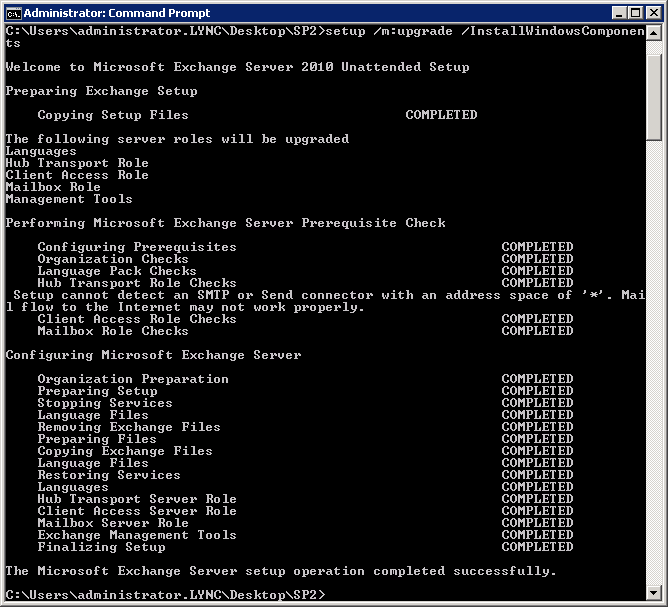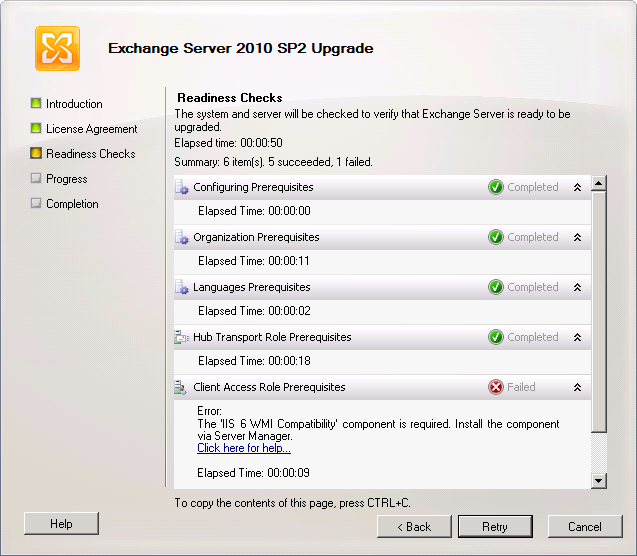Service Pack 3 (SP3) for Exchange Server 2010 Released
Microsoft has released Service Pack 3 (SP3) for Exchange Server 2010. See the Description of Exchange Server 2010 SP3 for more information, including a list of known issues.
The 549MB download is just like RTM – a full install package. Existing installations can be upgraded, as new installs can be completed with the Service Pack integrated.
What’s New in Exchange 2010 SP1 has a comprehensive list of the changes and enhancements, including:
- Coexistence with Exchange 2013: You can now install Exchange Server 2013 in your existing Exchange Server 2010 organization. To do this, install Exchange Server 2013 Cumulative Update 1 (CU1). You cannot install Exchange Server 2013 in your existing Exchange Server 2010 organization by using Exchange Server 2013 RTM installation media.
Note Exchange Server 2013 CU1 is also an installation medium for Exchange Server 2013. - Support for Windows Server 2012: You can now install and deploy Exchange Server 2010 on computers that are running Windows Server 2012.
- Support for Internet Explorer 10: You can now use Internet Explorer 10 to connect to Exchange 2010.
- Customer Requested Fixes: Exchange Server 2010 SP3 contains all the fixes that are contained in update rollups that were released before SP3. For more information about the release schedules of Exchange 2010 updates, see Exchange 2010 Servicing
- 2552121 You cannot synchronize a mailbox by using an Exchange ActiveSync device in an Exchange Server 2010 environment
- 2729444 Mailboxes are quarantined after you install the Exchange Server 2010 SP2 version of the Exchange Server 2010 Management Pack
- 2778100 Long delay in receiving email messages by using Outlook in an Exchange Server 2010 environment
- 2779351Â SCOMÂ alert when the Test-PowerShellConnectivity cmdlet is executed in an Exchange Server 2010 organization
- 2784569 Slow performance when you search a GAL by using an EAS device in an Exchange Server 2010 environment
- 2796950Â Microsoft.Exchange.Monitoring.exe process consumes excessive CPU resources when a SCOM server monitors Exchange Server 2010 Client Access servers
- 2800133 Application pools consume excessive CPU and memory resources on an Exchange Client Access server after you apply the Update Rollup 5 version 2 for Exchange Server 2010 SP2
- 2800346 Outlook freezes and high network load occurs when you apply retention policies to a mailbox in a mixed Exchange Server 2010 SP2 environment
- 2810617Â You cannot install Exchange Server 2010 SP3 when you define a Windows PowerShell script execution policy in Group Policy
- 2787500 Declined meeting request is added back to your calendar after a delegate opens the request by using Outlook 2010
- 2797529 Email message delivery is delayed on a Blackberry mobile device after you install Update Rollup 4 for Exchange Server 2010 SP2
- 2800080 ErrorServerBusy response code when you synchronize an EWS-based application to a mailbox in an Exchange Server 2010 environment
Important: Installation of this service pack requires an update to the Active Directory schema. For more information, see the Release Notes.
Download the Service Pack here.








Follow Me